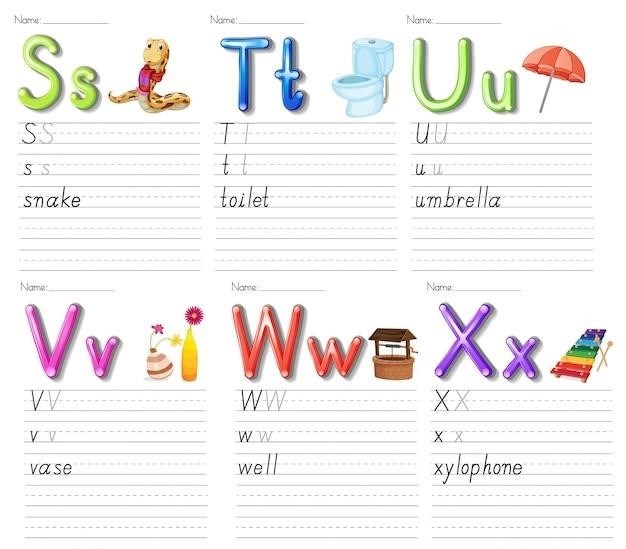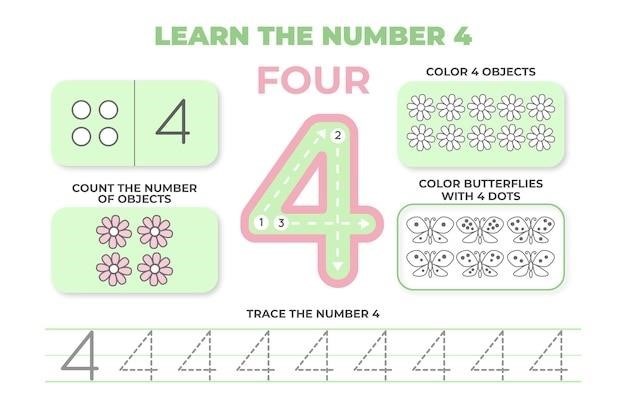Understanding old Lamona oven symbols is crucial for efficient cooking. This guide deciphers each symbol, from basic functions like the oven lamp to advanced modes, ensuring you unlock your oven’s full potential effortlessly. Learn to use your appliance effectively and safely with this comprehensive overview.
Overview of Old Lamona Oven Symbols
Old Lamona oven symbols are essential for understanding and operating your appliance effectively. These symbols, often found on the control panel, represent various cooking functions and settings, such as fan-assisted cooking, grilling, defrosting, and conventional heating. They are designed to be intuitive, helping users navigate the oven’s features effortlessly. Basic symbols include the oven lamp, which illuminates the interior, and the fan symbol, which indicates fan-assisted cooking for even heat distribution. Advanced symbols, such as the pizza function and energy-saving mode, offer specialized cooking options. Troubleshooting symbols, like those for cleaning mode or delayed start, provide additional convenience. These symbols are universal, making it easier for users to adapt to different models. By familiarizing yourself with these icons, you can unlock your oven’s full potential, ensuring precise control over cooking processes and enhancing your culinary experience. This guide will help you decode each symbol, maximizing efficiency and safety in the kitchen.
Structure of the Article

Basic Symbols Explained
This section covers essential symbols like the oven lamp, fan-assisted cooking, grill, defrost, conventional heating, and light symbols. Each is explained to ensure clear understanding and effective use of your old Lamona oven.
Oven Lamp Symbol
The oven lamp symbol is a straightforward feature on old Lamona ovens, represented by a simple light bulb icon. This symbol indicates that the oven’s internal light is activated, allowing users to monitor their food without opening the oven door. It does not engage any heating elements but provides visibility for checking cooking progress. The lamp is especially useful for delicate dishes where constant monitoring is essential. To use this function, simply press the corresponding button or dial on the control panel. The light will illuminate the oven cavity, giving you a clear view of your food’s condition. Always ensure the oven door is closed while the lamp is on to maintain consistent temperatures. This feature is energy-efficient and prevents unnecessary heat loss. Refer to your Lamona oven manual for specific instructions on how to operate the lamp symbol effectively and safely during cooking.
Fan-Assisted Cooking Symbol
The Fan-Assisted Cooking Symbol on old Lamona ovens is a circular icon with fan blades, indicating the activation of the fan-assisted mode. This function uses a fan to circulate hot air evenly throughout the oven, ensuring uniform cooking results. It is ideal for baking, roasting, and cooking multiple dishes simultaneously, as it promotes consistent heat distribution. The fan-assisted mode also reduces cooking times and helps achieve crispy textures on foods like roasted vegetables or meats. To use this feature, select the fan symbol on the control panel and set the desired temperature. The fan will operate quietly in the background, enhancing the overall cooking performance. Always refer to your Lamona oven manual for specific guidelines on using the fan-assisted mode effectively. This feature is a versatile tool for home cooks, offering precise control over a variety of culinary tasks while ensuring energy efficiency and delicious outcomes.

Grill Symbol
The Grill Symbol on old Lamona ovens is typically represented by a zigzag line at the top of a square or oven shape. This symbol activates the grill function, which is ideal for browning the tops of dishes, grilling meats, or making toast. When selected, the grill element at the top of the oven heats up, providing direct heat to the food. For best results, place the food on the highest shelf and monitor it closely to avoid overcooking. Always ensure the oven door is partially open when using the grill function, as this helps maintain optimal performance. The grill function adds versatility to your cooking, allowing you to achieve perfectly grilled results every time. This feature is particularly useful for achieving a crispy texture on dishes like cheese on toast or grilled vegetables. Refer to your Lamona oven manual for specific instructions on using the grill function safely and effectively.
Defrost Symbol
The Defrost Symbol on old Lamona ovens is often represented by a snowflake icon. This function allows you to safely thaw frozen food without cooking it. By circulating room-temperature air around the food, the defrost mode ensures even thawing while preventing bacterial growth. It’s an energy-efficient way to prepare meals without compromising on safety or convenience. To use the defrost function, place the food on a wire rack in the oven and set the symbol. The oven will automatically manage the thawing process. Always cover the food to prevent drying and ensure it’s properly sealed. This feature is ideal for delicate foods like fish or poultry, providing a healthy and hassle-free way to defrost. The defrost symbol is a practical solution for home cooks who want to save time and maintain food quality. For specific guidelines on using this function, refer to your Lamona oven manual.
Conventional Heating Symbol
The Conventional Heating Symbol on old Lamona ovens is typically represented by two horizontal lines, one at the top and one at the bottom of a square or oven shape. This symbol indicates the use of both the top and bottom heating elements, providing even heat distribution for traditional cooking methods. It’s ideal for roasting, baking, and cooking dishes that require consistent heat from both elements. This mode is perfect for dishes like cakes, cookies, and roasted meats, ensuring a balanced cooking process. The dual-element setup allows for better heat circulation, reducing hot spots and promoting uniform cooking results. For optimal performance, always position your food in the center of the oven rack when using this function. Refer to your Lamona oven manual for specific guidelines on using the conventional heating symbol effectively. This function is a cornerstone of traditional cooking, delivering reliable results for a variety of recipes.

Light Symbol
The Light Symbol on old Lamona ovens is a small bulb or light icon located on the control panel. This feature allows you to illuminate the oven interior without activating any heating elements, making it easy to monitor your food’s progress without opening the oven door. This is especially useful for delicate dishes or when precise visual checking is needed. Using the light symbol ensures that heat is retained within the oven, preventing temperature fluctuations that can affect cooking results. It is also energy-efficient, as it only powers the light and not the heating elements. Always ensure the oven light is clean and free from food residue for optimal visibility. For more details, consult your Lamona oven manual to understand how to use this function effectively. The light symbol is a practical tool that enhances your cooking experience by providing clear visibility and maintaining cooking efficiency.
Advanced Symbols and Functions

Advanced symbols on old Lamona ovens include specialized modes like pizza, energy-saving, and cleaning functions. These symbols enhance versatility, offering precise control for specific tasks, such as crispy pizza bases or eco-friendly cooking, optimizing performance and efficiency.
Pizza Function Symbol

The pizza function symbol on old Lamona ovens is designed for achieving perfectly cooked pizzas. Represented by a fan within a square or circular icon, this mode combines the fan and bottom heating element to circulate hot air evenly. This ensures a crispy crust and evenly melted toppings. Ideal for both homemade and frozen pizzas, it delivers consistent results. The symbol indicates a specialized setting that enhances cooking precision for pizza enthusiasts. By activating this function, users can enjoy restaurant-quality pizzas at home. The mode is a testament to the oven’s versatility in accommodating specific cooking needs. Always refer to the user manual for specific instructions on using the pizza function effectively, as it may vary slightly across models. This feature is a must-try for anyone looking to elevate their homemade pizza game, ensuring a deliciously cooked crust every time.
Energy-Saving Mode Symbol
The energy-saving mode symbol on old Lamona ovens is represented by a leaf icon, emphasizing its eco-friendly nature. This mode optimizes heating elements and fan operation to minimize energy consumption while maintaining efficient cooking results. Ideal for lighter meals or precise temperature control, it reduces power usage, making it a sustainable choice for eco-conscious users. The energy-saving mode is perfect for balancing cooking performance with environmental responsibility. By activating this feature, users can lower their energy bills and contribute to a greener kitchen. The mode is a practical solution for those who want to optimize their cooking process without compromising on results. Always refer to the user manual for specific guidelines on using the energy-saving mode effectively, as instructions may vary slightly across models. This feature highlights Lamona’s commitment to innovative, eco-friendly appliance design, ensuring both efficiency and sustainability in the kitchen.
Cleaning Mode Indicator

The cleaning mode indicator on old Lamona ovens is typically represented by a scrub brush icon or a similar symbol. This feature activates the oven’s specialized cleaning cycle, designed to maintain the appliance’s performance and hygiene. When selected, the mode prepares the oven for a deep clean, often involving high temperatures to burn off food residue. This function is essential for removing stubborn stains and odors, ensuring the oven remains in optimal condition. To use this mode, ensure the oven is empty and follow the guidelines in the user manual. Avoid using harsh chemicals, as the high heat will handle most of the cleaning. Regular use of the cleaning mode prevents grease buildup and maintains the oven’s efficiency. It also contributes to a safer cooking environment by reducing fire hazards from excess debris. Always refer to the manual for specific instructions, as settings may vary across models. This feature is a convenient way to keep your Lamona oven in pristine condition, ensuring it continues to perform reliably for years to come.
Proofing Symbol
The proofing symbol on old Lamona ovens is a specialized feature designed for baking enthusiasts. Often depicted as a rising dough icon, this symbol activates a controlled environment within the oven, ideal for proofing yeast-based dough. By maintaining a consistent, warm temperature without excessive heat, it allows dough to rise evenly and efficiently. This mode is particularly useful for homemade bread, pastries, and rolls, ensuring light and airy textures. To use the proofing function, place the dough in a lightly oiled bowl, cover it with plastic wrap or a damp cloth, and position it in the oven. Set the symbol and let the oven create the perfect conditions for fermentation. This feature enhances baking results by providing precise temperature control, essential for yeast activation and dough development. Regular use of the proofing symbol can elevate your baking skills, making it a valuable tool for achieving professional-quality bread at home. Always refer to the user manual for specific instructions on using this function effectively.
Delayed Start Symbol
The delayed start symbol on old Lamona ovens is a convenient feature that allows you to schedule cooking in advance. Represented by a clock icon, this function lets you set a specific start time for your cooking cycle, ensuring your meal is ready exactly when you need it. Simply enter the current time and the desired start time using the control panel, and the oven will automatically begin the selected function at the programmed time. This is perfect for busy households, enabling you to prepare meals ahead of time without constant monitoring. The delayed start symbol works with most cooking modes, including fan-assisted and conventional heating, and ensures your dish is perfectly cooked and ready to serve. Always refer to your oven’s user manual for detailed instructions on setting the delayed start function. This feature adds flexibility to your cooking routine, making meal preparation easier and more efficient.
Troubleshooting Common Issues
Common issues with old Lamona oven symbols include symbols not lighting up or incorrect function activation. Check the power supply, control panel, and wiring. Consult the manual or contact a technician for persistent problems.
Symbols Not Lighting Up
If the symbols on your old Lamona oven are not lighting up, it may indicate a power supply issue or a faulty control panel. First, ensure the oven is properly plugged in and check if the circuit breaker has tripped. A blown fuse or damaged wiring could also be the cause. Additionally, a malfunctioning touchpad or display panel might prevent the symbols from illuminating. To resolve this, restart the oven by switching it off at the mains for a few minutes. If the problem persists, consult the user manual or contact a qualified technician to diagnose and repair any internal electrical issues. Avoid attempting complex repairs yourself to ensure safety and prevent further damage to the appliance.
Wrong Function Activation
If your old Lamona oven activates the wrong function when a symbol is pressed, it may indicate a fault in the touchpad or control system. To address this, restart the oven by switching it off at the mains for a few minutes. If the issue persists, inspect the control panel for visible damage or wear. Clean the touchpad gently to ensure no obstructions are causing misregistration. In some cases, a software glitch or faulty sensors might be the culprit. Refer to the user manual for reset instructions or contact a professional technician for further assistance. Addressing this issue promptly ensures safe and reliable operation of your appliance, preventing potential safety hazards or further malfunctions.
Basic Troubleshooting Steps
When encountering issues with your old Lamona oven, start with basic troubleshooting steps to resolve common problems. First, ensure the oven is properly plugged in and the circuit breaker hasn’t tripped. Check for any loose connections or blown fuses. If symbols are not lighting up, verify that the display is clean and free of obstructions. For incorrect function activation, restart the oven by switching it off at the mains for a few minutes. Clean the touchpad gently to remove any residue that might interfere with sensor accuracy. If the issue persists, consult the user manual for reset instructions or specific error codes. Avoid attempting complex repairs without professional assistance, as this could worsen the problem. By following these steps, you can often resolve minor issues quickly and safely, ensuring your oven operates efficiently and effectively.
When to Contact a Technician
If basic troubleshooting steps fail to resolve the issue, it’s essential to contact a qualified technician. Persistent problems like symbols not lighting up, incorrect function activation, or malfunctioning heating elements may indicate internal faults requiring professional attention. Electrical issues, such as faulty wiring or blown fuses, should only be addressed by an expert to avoid safety risks. Additionally, if the oven’s control panel or sensors are damaged, a technician can diagnose and repair the problem effectively. Attempting complex repairs yourself can lead to further damage or safety hazards. Always consult the user manual for guidance, and if unsure, seek assistance from a certified professional. Regular maintenance and timely repairs ensure your oven operates safely and efficiently, prolonging its lifespan and preventing costly future issues. Don’t hesitate to contact a technician if you’re unsure about any aspect of your oven’s functionality.

Safety Tips and Guidelines
Always keep the oven clean to prevent fire hazards and ensure proper ventilation. Use protective gloves when handling hot surfaces and never touch the oven glass without cooling it. Be aware of warning symbols to avoid electric shock or burns, and ensure the oven is installed correctly to maintain safety standards while cooking.

General Safety Precautions
Always prioritize safety when using your old Lamona oven. Keep the oven clean to prevent grease buildup, which can cause fires. Avoid overheating by monitoring cooking times and temperatures. Use oven mitts or gloves when handling hot dishes or racks to prevent burns. Ensure proper ventilation in your kitchen to avoid fumes and moisture accumulation. Never leave children unattended near the oven, and keep flammable materials away. Regularly inspect the oven door seals for damage to maintain heat retention and safety. If you notice any malfunctioning symbols or electrical issues, stop using the oven immediately and contact a technician. Always follow the manufacturer’s guidelines for installation and operation to ensure safe and efficient performance. By adhering to these precautions, you can enjoy a safe and hassle-free cooking experience with your Lamona oven.
Handling Hot Surfaces Safely
When using your old Lamona oven, always exercise caution with hot surfaces to prevent burns. Use oven mitts or heat-resistant gloves when handling hot dishes, racks, or the oven door. Ensure the mitts are dry and free from holes or wear. Avoid wearing loose clothing that could catch fire near the oven. Always place hot dishes on heat-resistant surfaces, not directly on countertops or tables. Keep children away from the oven when it is in use, as they may accidentally touch hot surfaces. Never leave hot surfaces unattended, especially when cooking at high temperatures. Regularly clean food spills to prevent splatter and maintain even heat distribution. If you notice damaged or cracked glass on the oven door, stop using the oven until it is repaired. By taking these precautions, you can protect yourself and others from burns while cooking with your Lamona oven.
Proper Ventilation Practices
Proper ventilation is essential when using your old Lamona oven to ensure efficient cooking, reduce odors, and maintain a safe kitchen environment. Always use your extractor fan or range hood while cooking, especially during high-heat functions like grilling or frying, to remove steam and fumes. Open windows or doors slightly to allow fresh air to circulate and prevent the buildup of heat or moisture. Avoid strong drafts near the oven, as they can disrupt the flame or heat distribution in gas models. Regularly clean filters in your ventilation system to ensure optimal airflow. Keeping your kitchen well-ventilated not only enhances cooking performance but also helps prevent grease and moisture from accumulating on surfaces, reducing the risk of mold or fire hazards. Proper ventilation practices are crucial for maintaining a safe, comfortable, and efficient cooking space with your Lamona oven.
Understanding Warning Symbols
Warning symbols on your old Lamona oven are designed to alert you to potential hazards or critical conditions. These symbols are essential for safe operation and should never be ignored. Common warning symbols include indicators for high temperatures, electric shock risks, or malfunctioning components. Always refer to your oven’s manual to understand the meaning of each warning symbol, as they may vary slightly between models. For example, a flashing light or exclamation mark icon often signals an error or unsafe condition that requires immediate attention. Pay particular attention to symbols related to overheating, as they may indicate a need to turn off the oven or reduce temperature settings. Ignoring these warnings can lead to damaged appliances, inefficient cooking, or even safety risks like fires. By staying informed about warning symbols, you can ensure a safe and trouble-free cooking experience with your Lamona oven.
Mastering old Lamona oven symbols enhances cooking efficiency, safety, and versatility. From basic functions to advanced modes, understanding these symbols ensures precise control and optimal results, making every cooking experience enjoyable and stress-free.
Understanding old Lamona oven symbols is essential for maximizing cooking efficiency and safety. This guide covers basic symbols, such as the oven lamp and fan-assisted cooking, as well as advanced functions like pizza mode and energy-saving options. By recognizing these symbols, users can avoid common issues like incorrect function activation and ensure even cooking results. The guide also emphasizes troubleshooting tips, such as checking power supply or control panel issues, and highlights the importance of proper maintenance, like cleaning modes. Mastering these symbols empowers users to explore diverse cooking techniques, from defrosting to proofing, while maintaining appliance longevity. Whether you’re a novice or an experienced cook, this overview provides a clear path to unlocking your oven’s full potential and achieving consistent, delicious outcomes with minimal effort.
Encouragement to Explore More
Now that you’ve mastered the basics of old Lamona oven symbols, it’s time to explore further and unlock your oven’s full potential. Discover advanced features like proofing, delayed start, and energy-saving modes to elevate your cooking skills. Experiment with specialized functions such as the pizza mode or cleaning cycles to streamline your kitchen routine. By familiarizing yourself with these symbols, you’ll not only enhance your culinary creativity but also ensure efficient and safe cooking. Don’t hesitate to try new recipes and techniques, as understanding these symbols empowers you to make the most of your appliance. Whether you’re a novice or an experienced cook, continuous exploration will help you uncover hidden features and capabilities of your Lamona oven, leading to countless delicious meals and a more enjoyable cooking experience. Embrace the versatility of your oven and take your culinary journey to the next level!





















